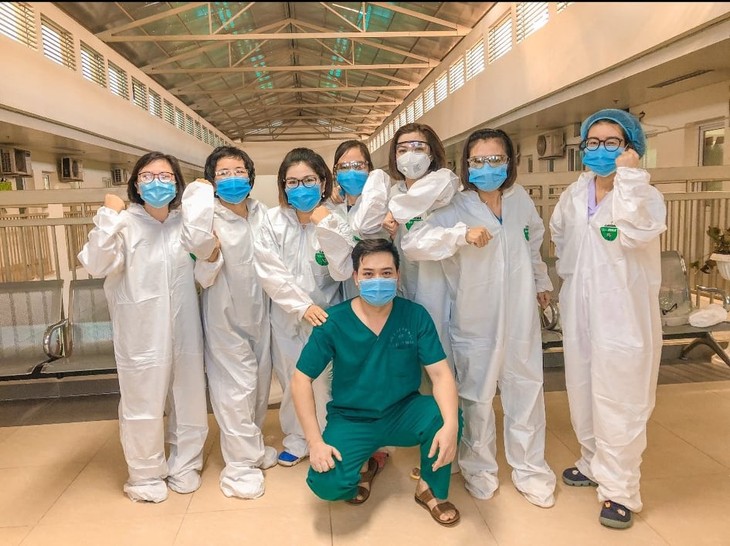 Doctor Dinh Van Tap (C) and his teammates. Doctor Dinh Van Tap (C) and his teammates. |
"One call. One day to pack everything. One last moment to look at life outside that door, and then to spend the next weeks or months in a place where many people are at death's door. I’ve never felt such deep sadness with every step I take. Entering a COVID-19 treatment facility, for me, is like walking to the edge of a deep hole and jumping."
"Confused and worried. We have never been in close contact with a COVID patient, let alone taking care of them. We were somehow lost. Many of us were unable to sleep until 2 in the morning."
Doctor Dinh Van Tap and nurse Nguyen Thi Thu Huong are recalling the day they received an order to work in the COVID-19 treatment ward of Hanoi’s Thanh Nhan hospital. This is a brand-new experience for them, each of whom has nearly 20 years of experience working in the health care sector. With mixed feelings, they both stepped onto one battlefield of the war against COVID-19 that has killed millions of people worldwide.
Life inside a COVID-19 treatment area is no picnic. Medical staff must follow strict rules to protect themselves from a deadly virus which seems to be all around them. A typical day of a healthcare worker starts at 7 a.m., when they begin their round of patient visits, collecting test samples, deliver medications, and encouraging the patients.
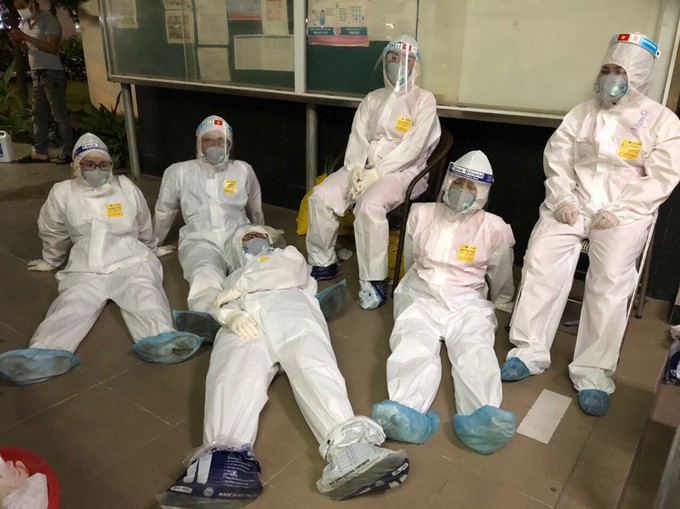 Prolonged PPE use makes healthcare workers sweat and be exhausted faster. Prolonged PPE use makes healthcare workers sweat and be exhausted faster.(Photo: VnExpress)
|
They’re required to use personal protective equipment (PPE) the entire time they’re around people diagnosed with COVID-19. They must take off all personal items; put on a scrub suit and rubber boots; disinfect their hands; put on gloves, a disposable gown, an N95 mask, a face shield or googles, a head and neck covering, and a second pair of gloves. This gives them the appearance of an astronaut or motorcycle racer. The whole process is closely watched by two supervisors.
"Putting on clothes and washing our hands has never been so stressful. We must stay focused because even a tiny mistake could result in our getting infected by the virus," said Dr. Tap.
"Wearing the N95 mask properly means we can’t smell anything, but the smallest gap could mean exposure to the virus. We have to use the PPE during our 5-hour shift without eating, drinking, or going to the toilet. We’re soaking wet with sweat most of the time. It’s like being in a sauna," he added.
The suits are for one-time use only, so every time a doctor or a nurse leaves the ward, he or she needs to take it off and then put on a brand new one before re-entering the ward. Each person is given three protective suits per day, one for the morning shift, one for the afternoon shift, and one in case he or she passes out due to oxygen saturation or dehydration after wearing the PPE for a long period of time.
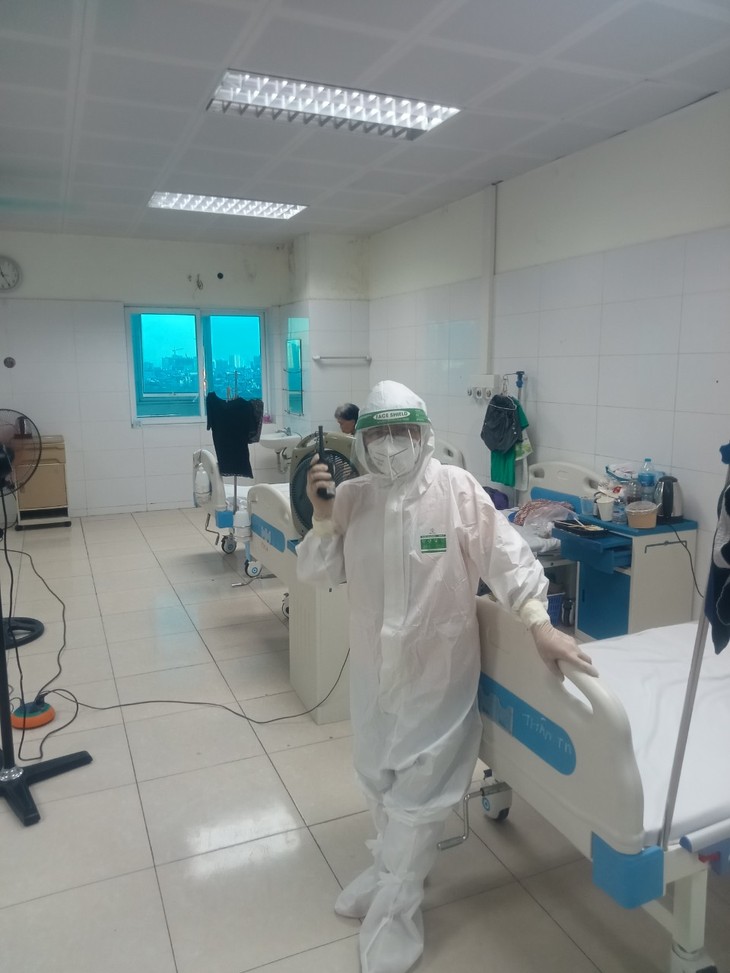 Doctors communicate via walkie-talkie. Doctors communicate via walkie-talkie. |
Air conditioners are turned off inside the COVID-19 treatment unit because they draw air and re-circulate it through the room, and through that mechanism coronavirus droplets can be transmitted. Whenever a staff member feels unwell and wants to leave the ward, he or she communicates with other staff members via walkie-talkie.
Whenever a staff member announces they must leave the patient ward, two other staff members must be sent to watch them remove their protective clothing. Removing the protective suit is more complicated than putting it on, because the virus is assumed to be on the outside of the clothing. After they remove their suit, some people fall to the floor and lie there gasping from exhaustion.
The patient room and the doctor room is separated by an automatic glass door. Patients with mild symptoms like headache or loss of taste often communicate with their doctor through the messaging app Zalo. The patients check their own temperature several times a day and update their doctors via the app. Cameras are set up to record every single move of the patients so the doctors can observe them remotely on a big monitor screen and minimize close contact with them.
COVID-19 patient Nguyen Thi Lan Huong said, "It’s really convenient to communicate with the doctors via a chat app. Whenever I inform them of new symptoms or have any question, they show up immediately and support me. Despite wearing that stuffy suit, they never complain or get angry. They must have developed a really strong empathy with the patients."
Doctors and nurses like Mr. Tap and Ms. Huong spend most of their time and energy on critical patients, who can’t breathe adequately on their own and must stay in an intensive care unit (ICU), separated from other patients.
The ventilators that help patients breathe by pumping air into their lungs produce a sound that many people find scary and haunting. But to the patients and medical staff in the ICU these are the sounds of life and hope.
A patient who recovered from COVID-19 after spending more than 10 days in the ICU recalled her days of feeling more dead than alive.
"After the first three days, I began to have a high fever, suffered from racking coughs, and found it hard to breathe on my own. I never felt so close to death. I cried my heart out when I was forced to have my head shaved — compulsory for all critical patients for reasons of hygiene. I still remember every word the doctor said – 'Summon all the energy you have to do two things – breathe and eat – and you will live.'”
She said, "The nurses did everything for me: fed me, helped me take medicines, cleaned my body, and even changed my diaper, as I was unable to go to the toilet. I will forever be grateful for what they did, although I couldn’t see their faces."
COVID-19 patients’ families, spouses, and friends are not allowed to enter the hospital to visit their loved ones. Fathers are told they cannot be present for the birth of their children. Family members are told they cannot hold the hand of their loved one as they die. We are now being barred from the two most sacred moments in a person’s life — their birth and their death.
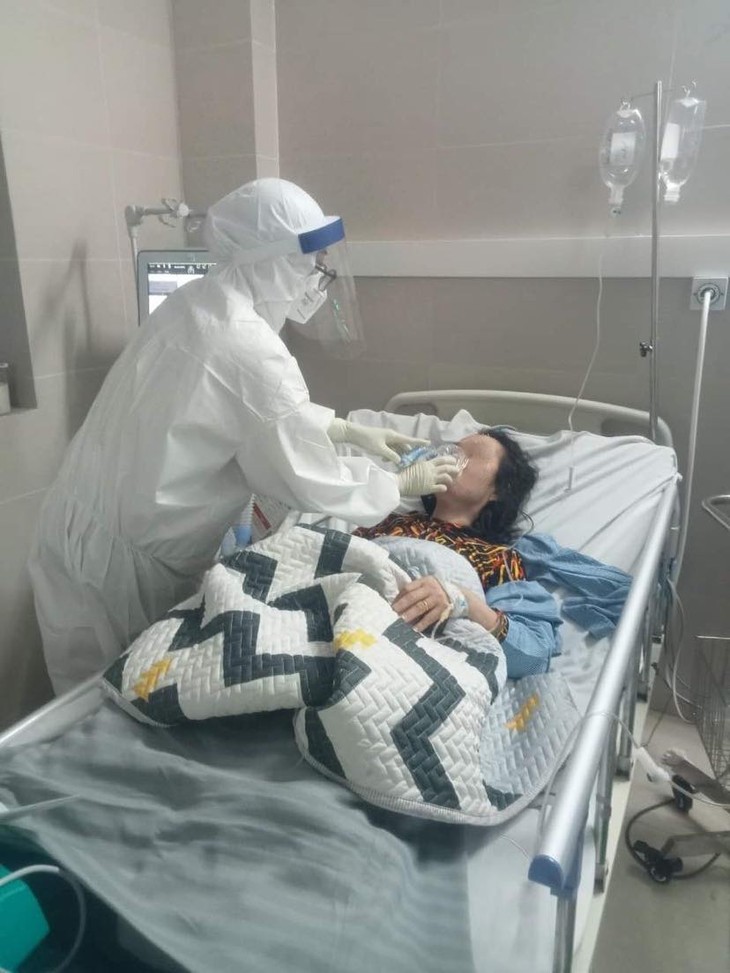 No one, except healthcare workers, is allowed to visit COVID-19 patient at hospital. No one, except healthcare workers, is allowed to visit COVID-19 patient at hospital. |
|
Doctors and nurses are the only connection between the patients and their families and friends.
"When family members receive a call from a doctor, most of them get very anxious about what news they are about to hear from the doctor. So we always try to talk to them like a friend, reassure them, and try not to make them feel shocked or depressed, especially when we have to tell them their loved one is getting worse or has already passed away," said Dr. Tap
Mr. Tap says he never gives up on those who are within an inch of their life and are about to quit. He challenges himself to never allow a patient to give up hope.
"The most common question I get from the patients is 'Will I die?' or 'Will I ever be able to go home again?' Many share with me their dreams, what they wish they could have done, and how badly they want to realize those dreams," said Dr. Tap.
"This hits me right at the core of my heart and motivates me to continue seeking the best possible medication and treatment protocols to save my patients."
During their precious short breaks, they gather in a hallway to chit chat about life, listen to music, take a nap, read a book, or call their families and friends. This will recharge their energy to provide a strong shoulder for the patients to lean on.
"There are times when I’m very tired, or worried, or feel lonely and want to cry, but hearing the voice of my husband and children wipes away all those negative feelings. I’m thankful that my family understand my job and support me while I’m away. I keep telling myself to be strong and positive," said nurse Nguyen Thi Thu Huong.
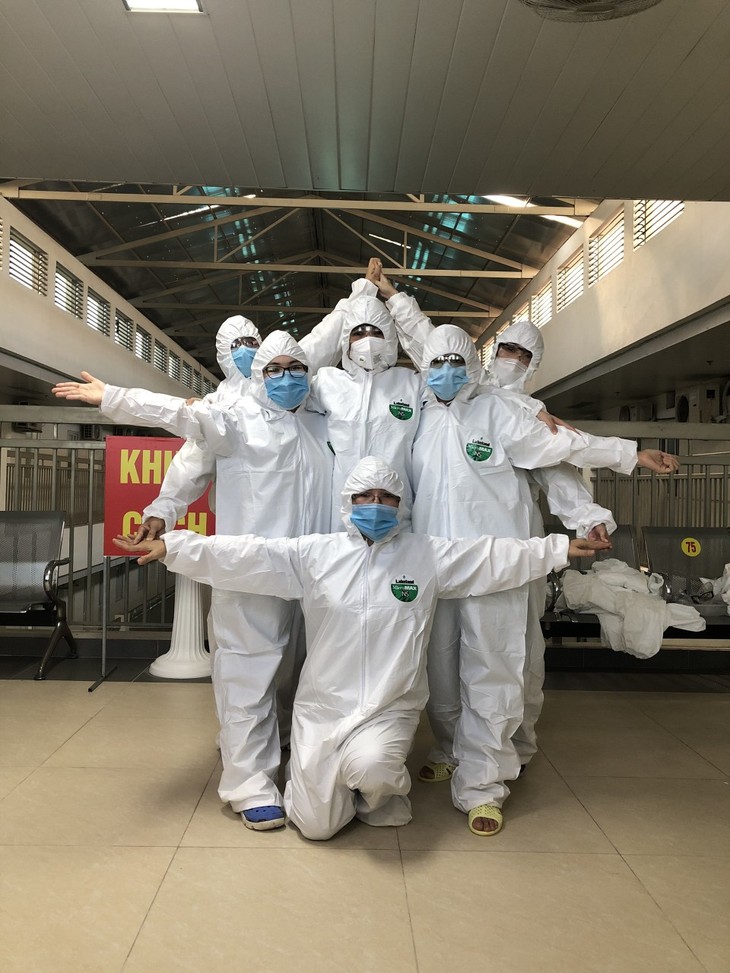 COVID-19 doctors always try to stay strong during the fight against the pandemic. COVID-19 doctors always try to stay strong during the fight against the pandemic. |
Despite being far from home and not sure when to come back, the thing that makes a COVID-19 doctor happy is probably seeing his patients recover and be discharged from hospital.
"Whenever I see a critical patient gets better or a positive patient turns negative, I’m flattered and proud to be somewhat meaningful to their lives. The feeling of fear and anxiety I encountered on the first day has gone. Now, I’m always ready to fight. How can I ignore my responsibility when the nation is in danger and needs me," said Dr. Tap.